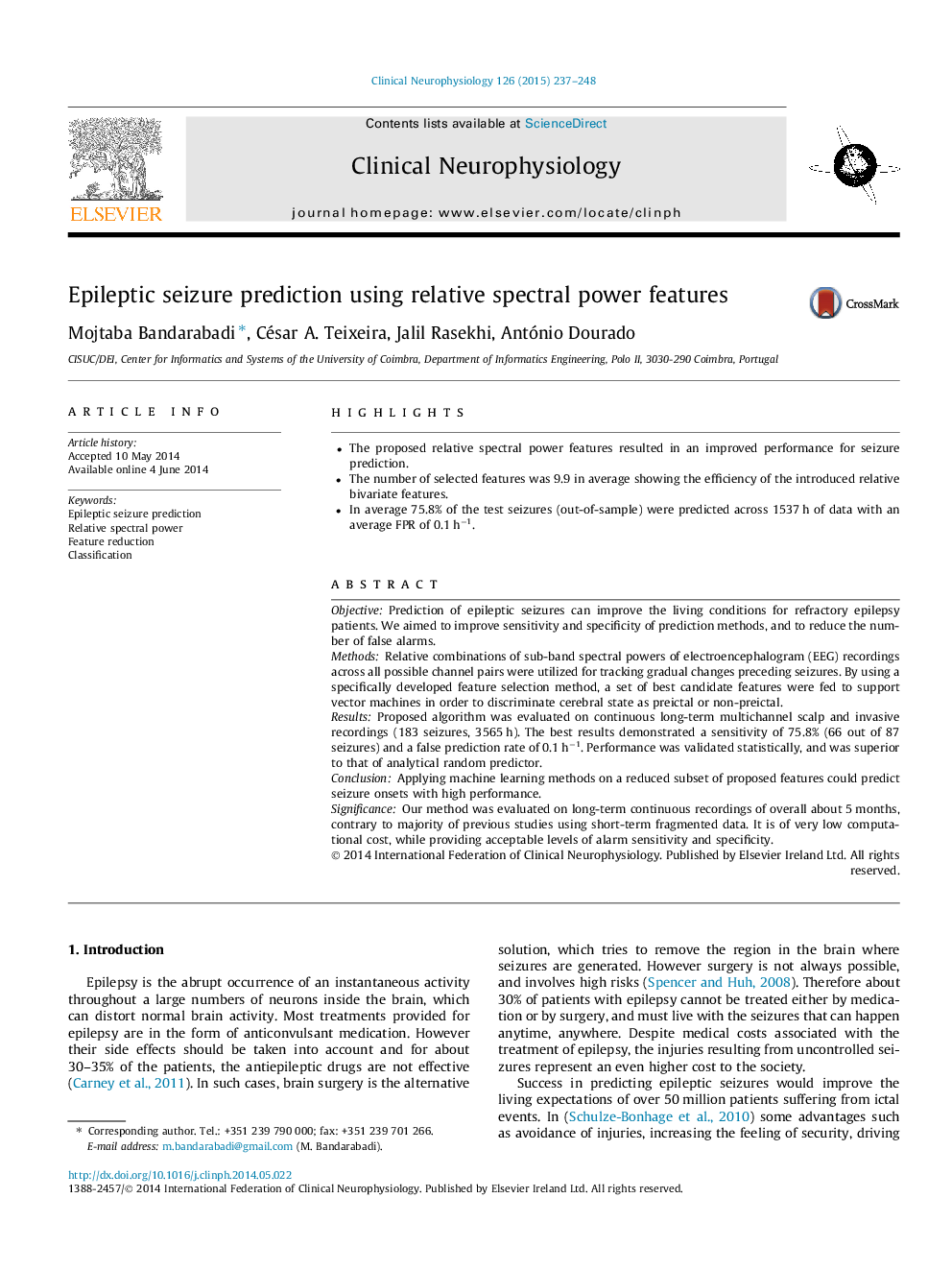| Article ID | Journal | Published Year | Pages | File Type |
|---|---|---|---|---|
| 3043066 | Clinical Neurophysiology | 2015 | 12 Pages |
•The proposed relative spectral power features resulted in an improved performance for seizure prediction.•The number of selected features was 9.9 in average showing the efficiency of the introduced relative bivariate features.•In average 75.8% of the test seizures (out-of-sample) were predicted across 1537 h of data with an average FPR of 0.1 h−1.
ObjectivePrediction of epileptic seizures can improve the living conditions for refractory epilepsy patients. We aimed to improve sensitivity and specificity of prediction methods, and to reduce the number of false alarms.MethodsRelative combinations of sub-band spectral powers of electroencephalogram (EEG) recordings across all possible channel pairs were utilized for tracking gradual changes preceding seizures. By using a specifically developed feature selection method, a set of best candidate features were fed to support vector machines in order to discriminate cerebral state as preictal or non-preictal.ResultsProposed algorithm was evaluated on continuous long-term multichannel scalp and invasive recordings (183 seizures, 3565 h). The best results demonstrated a sensitivity of 75.8% (66 out of 87 seizures) and a false prediction rate of 0.1 h−1. Performance was validated statistically, and was superior to that of analytical random predictor.ConclusionApplying machine learning methods on a reduced subset of proposed features could predict seizure onsets with high performance.SignificanceOur method was evaluated on long-term continuous recordings of overall about 5 months, contrary to majority of previous studies using short-term fragmented data. It is of very low computational cost, while providing acceptable levels of alarm sensitivity and specificity.
